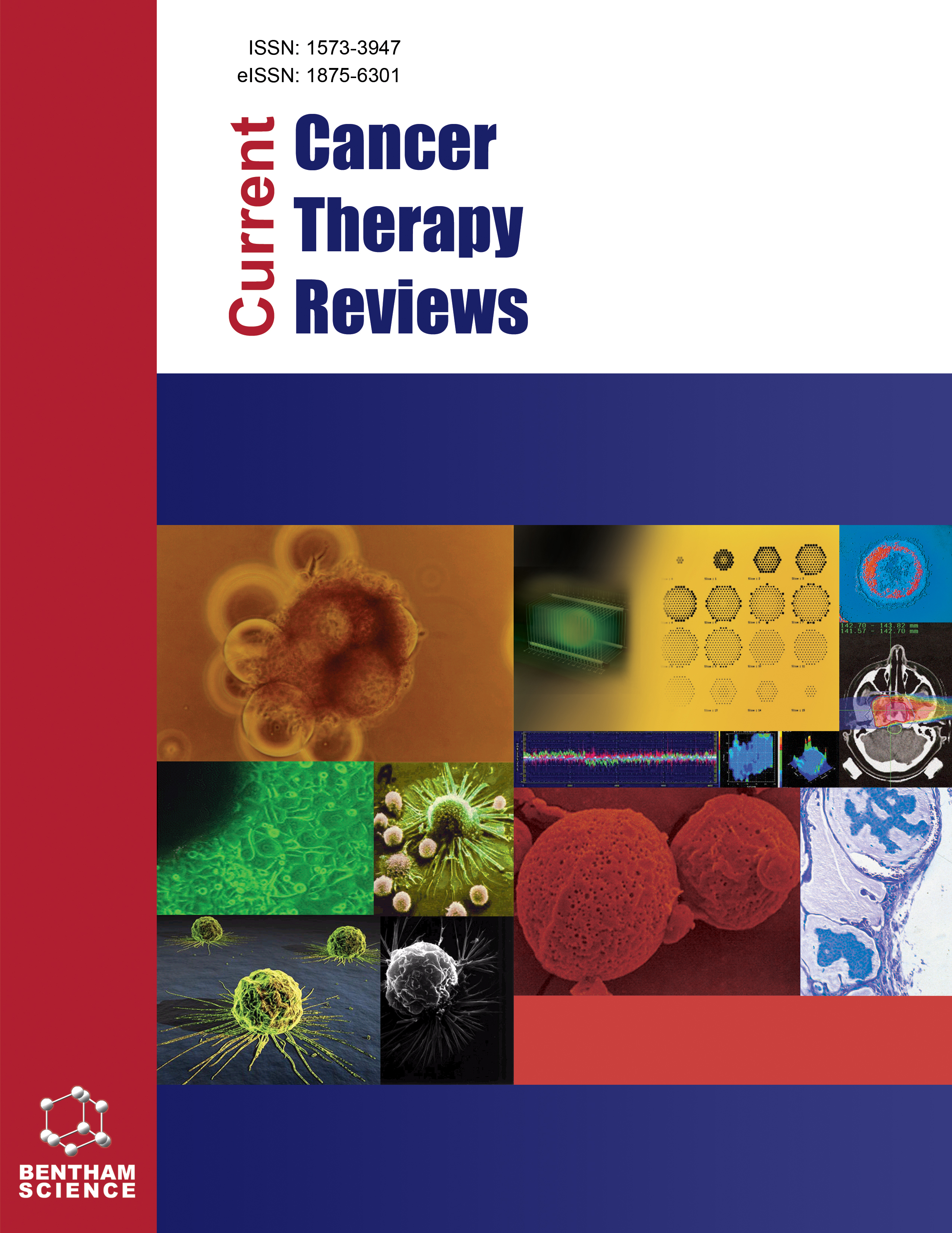- Home
- A-Z Publications
- Current Cancer Therapy Reviews
- Previous Issues
- Volume 9, Issue 3, 2013
Current Cancer Therapy Reviews - Volume 9, Issue 3, 2013
Volume 9, Issue 3, 2013
-
-
Is it Possible to Reduce the Incident of Colorectal Cancer by Modifying Diet and Lifestyle?
More LessColorectal cancer (CRC) is the third most frequent cancer in men, after lung and prostate cancer, and is the second most frequent cancer in women after breast cancer. It is also the third cause of death in men and women separately, and is the second most frequent cause of death by cancer if both genders are considered together. CRC represents approximately 10% of deaths by cancer. The incidence of CRC is low up Read More
-
-
-
Nanotechnology for Cancer Diagnostics and Therapy – An Update on Novel Molecular Players
More LessAuthors: Alexandra R. Fernandes and Pedro Viana BaptistaNanotechnology has emerged as a "disruptive technology" that may provide researchers with new and innovative ways to diagnose, treat and monitor cancer. In fact, nanomedicine approaches have delivered several strategies, such as new imaging agents, real-time assessments of therapeutic and surgical efficacy, multifunctional, targeted devices capable of bypassing biological barriers to target and silence specific Read More
-
-
-
Post-locoregional Therapy MRI Evaluation of Malignant Liver Lesions
More LessPrimary liver tumors and liver metastases are the two most common malignant liver tumors. In cases of unresectable malignant tumors, local ablative therapies are considered as the preferred option. These include transarterial chemoembolization, radioembolization, radiofrequency ablation, microwave ablation, percutaneous alcohol injection, cryotherapy and laser therapy. Local ablative therapies have the additive Read More
-
-
-
Membrane Tyrosine Kinase Receptors Kit and FLT3 are an Important Targets for the Therapy of Acute Myeloid Leukemia
More LessBy Ugo TestaKIT and FLT3 are class III trans membrane tyrosine kinases playing key roles in the control of hematopoietic stem cell survival and proliferation. KIT is mutated in about 2.5-3% of acute myeloid leukemia (AML) patients mainly by point mutations occurring at the level of tyrosine kinase domains. FLT3 is mutated in about 30% of AML patients, either by internal tandem duplication of the juxtamembrane domain or by point mutation Read More
-
-
-
Metastatic Gastro-intestinal Neuroendocrine Tumors: A Case Report of Real Life Management Challenges and Success
More LessAuthors: Jamal Zekri and Zahid Amin KhanIntroduction: Until recently, there have been limited options for treatment of metastatic neuro endocrine tumors (NETs). Real life experience with newly developed targeted therapies for this condition is limited outside large referral centers. Case: Here we describe a 43 year old patient with metastatic NET of intestinal origin. The management of this patient illustrates a number of real life practical issues including effect of tre Read More
-
Volumes & issues
-
Volume 21 (2025)
-
Volume 20 (2024)
-
Volume 19 (2023)
-
Volume 18 (2022)
-
Volume 17 (2021)
-
Volume 16 (2020)
-
Volume 15 (2019)
-
Volume 14 (2018)
-
Volume 13 (2017)
-
Volume 12 (2016)
-
Volume 11 (2015)
-
Volume 10 (2014)
-
Volume 9 (2013)
-
Volume 8 (2012)
-
Volume 7 (2011)
-
Volume 6 (2010)
-
Volume 5 (2009)
-
Volume 4 (2008)
-
Volume 3 (2007)
-
Volume 2 (2006)
-
Volume 1 (2005)
Most Read This Month
Article
content/journals/cctr
Journal
10
5
false
en


